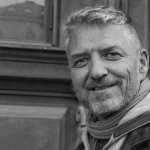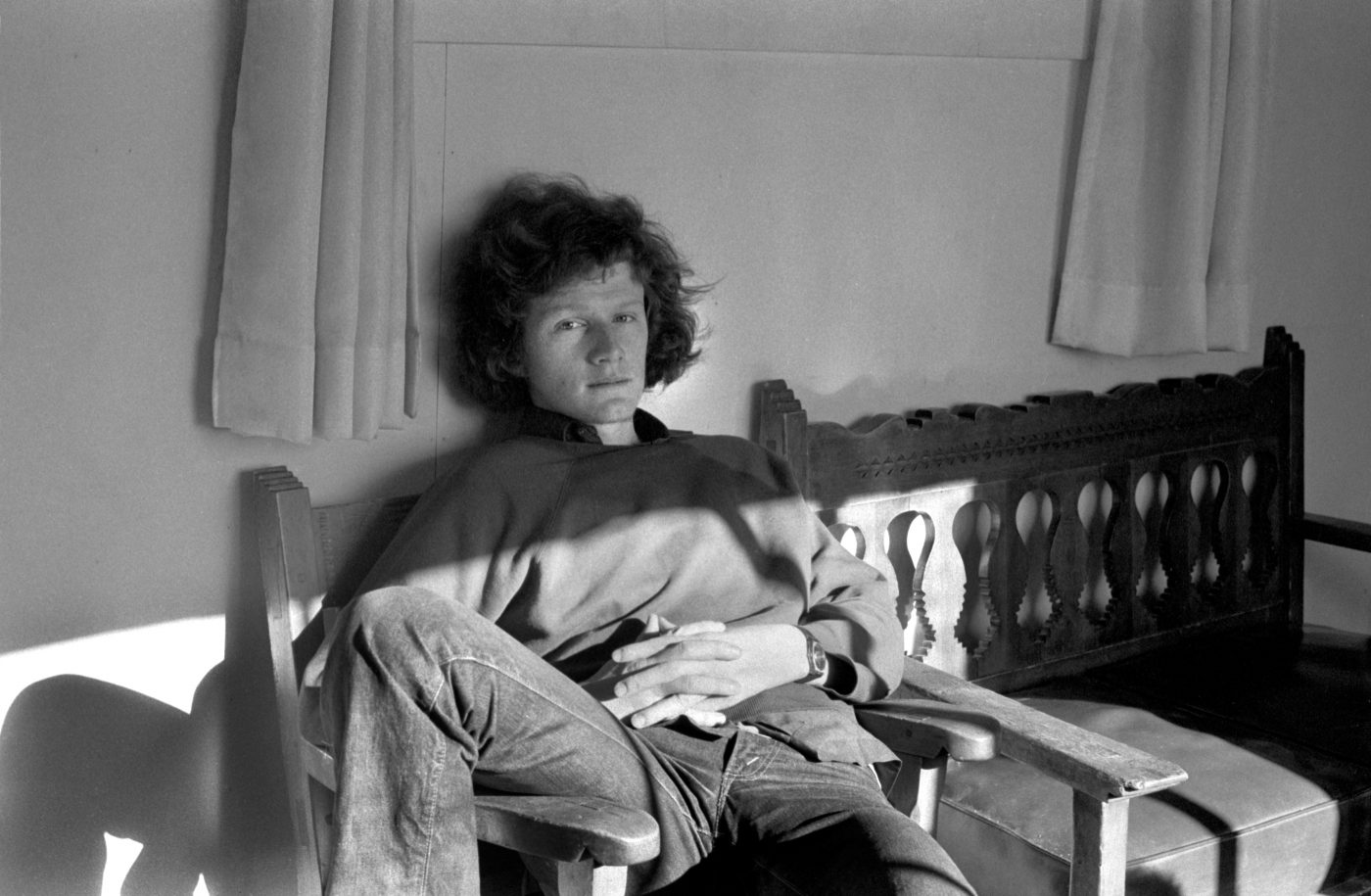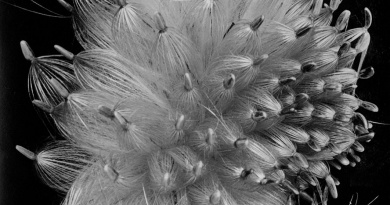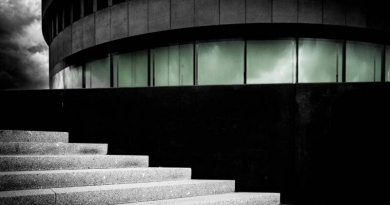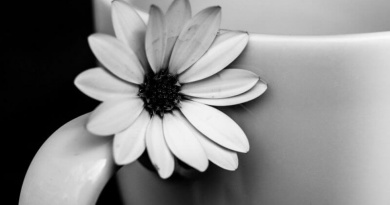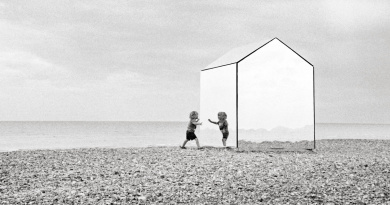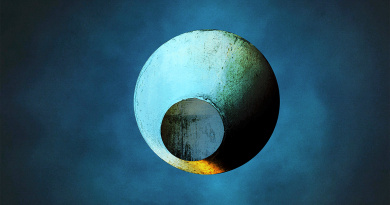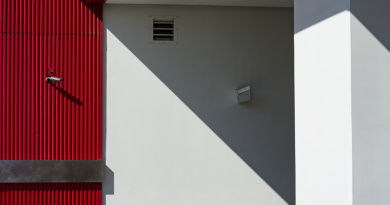In the early 1970's visual storyteller Homer Sykes started his research into documenting traditional British folklore customs and annual events, which has become the largest long-term project of his career. Homers’ unique survey on British customs is an iconic series which contrasts age old traditions with the modernity of every day life. Homer Sykes was a keen photographer from a young age and had a darkroom at home. In 1968, he began a three-year course at the London College of Printing. During this time, he happened to come across a report about the Britannia Coconut Dancers in an issue of "In Britain Magazine", which prompted him to research other local festivals in Britain and began photographing these festivals. He also photographed the rock, punk, new wave, and other music/fashion scenes of Britain. He photographed for news stories for the Weekend Telegraph, Observer, Sunday Times, Newsweek, Now, Time, and New Society. His series “Once a Year” was exhibited at the Lucy Bell Gallery in 2021. We are pleased to present Homer Sykes with images of this series and an interview.
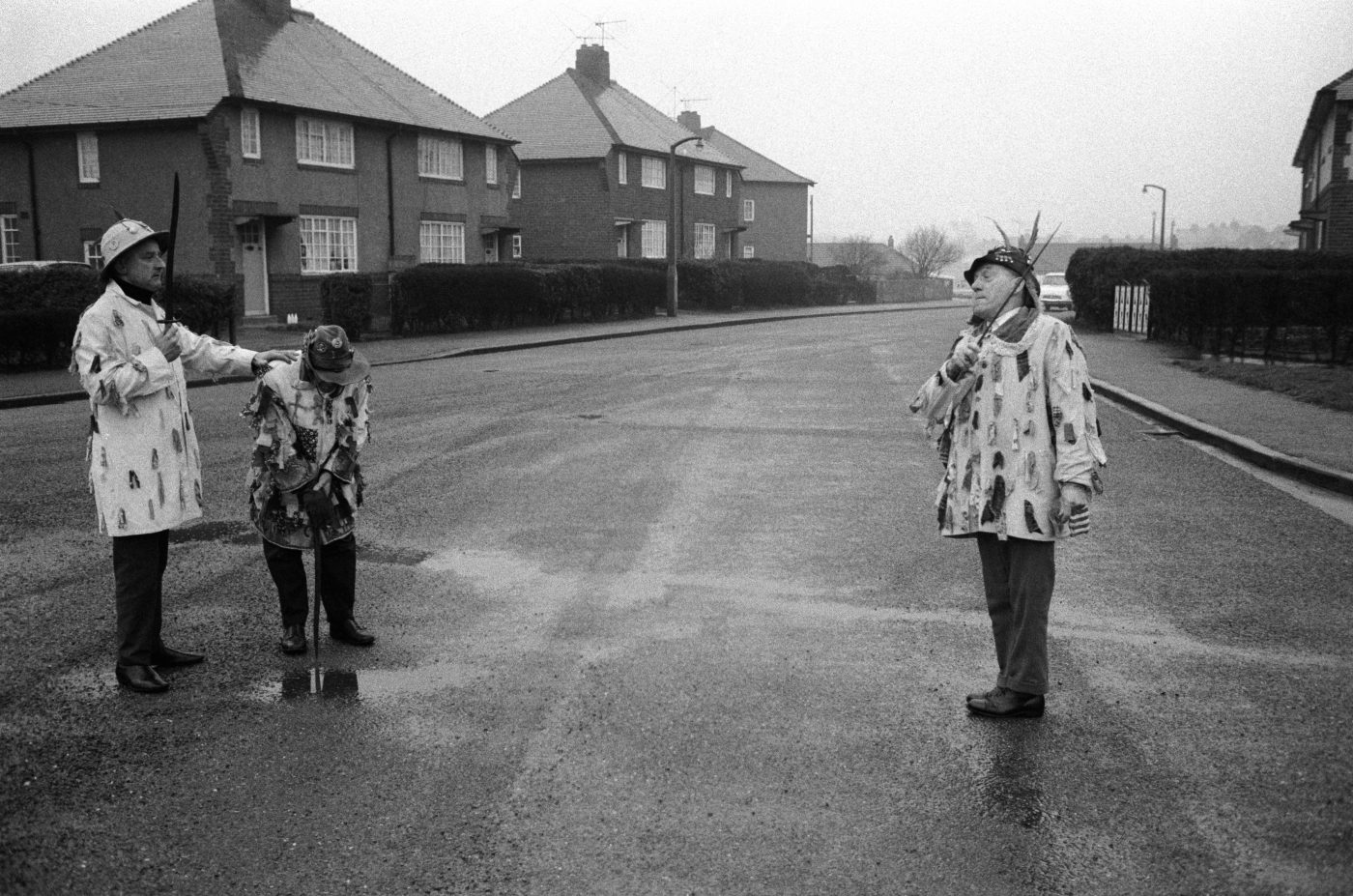
Ripon Sword Dance Play, Yorkshire 1971.
The play is performed at the old boundaries of the town annually on Boxing Day.
© Homer Sykes
Homer Sykes, this was the start of your career as a documentary photographer. Your project "Once a Year" has been dubbed arguably the "Best study of English folklore and ritual." How did you come to document this topic, what made you do it, how did you prepare this project?
The first year Easter college project was to go and make some photographs! Of anything! I was looking through magazines in the college library during one lunch hour and came across a photograph of the Bacup Coconut Dancers that takes place in Bacup, Lancashire. It took place annually at Easter. I decided to go, I realized when I was in Bacup that there were many other traditional annual village and country customs, and almost no one was documenting them other than the local photographer, who would just take a ‘line up’ photograph of smiling faces.
I wanted to be a documentary photographer, and make pictures that told stories in an interesting and contemporary way.
I researched many more events through libraries, made hundreds of phone calls and wrote too many letters. There was of course no Internet.

Pinner annual fair, Middlesex 1971.
Pinner was granted an annual fair by Edward 111 in 1336,
that now takes place on Whit Wednesday.
Strip tease tent and Humphrey Bogart eye.
© Homer Sykes
What was it about photography that excited you at a young age, how did it come about that you became interested in photography, and later in documentary photography?
I was a schoolboy photographer; I had my own darkroom and read the photography magazines. My mother used to save the colour supplements, The Sunday Times, The Observer The Telegraph magazines that came with the Sunday newspapers, as well as Life and Look magazine for me to read when I came home during the school holidays.
I loved the idea of travel, as so many people do, but I realized it was more important to understand the culture, speak the language and have a deeper understanding of the people, than just travelling to some far-flung destination not knowing and understanding really what you were seeing or what was going on. Also it was a lot cheaper to be a traveler in and around Britain.
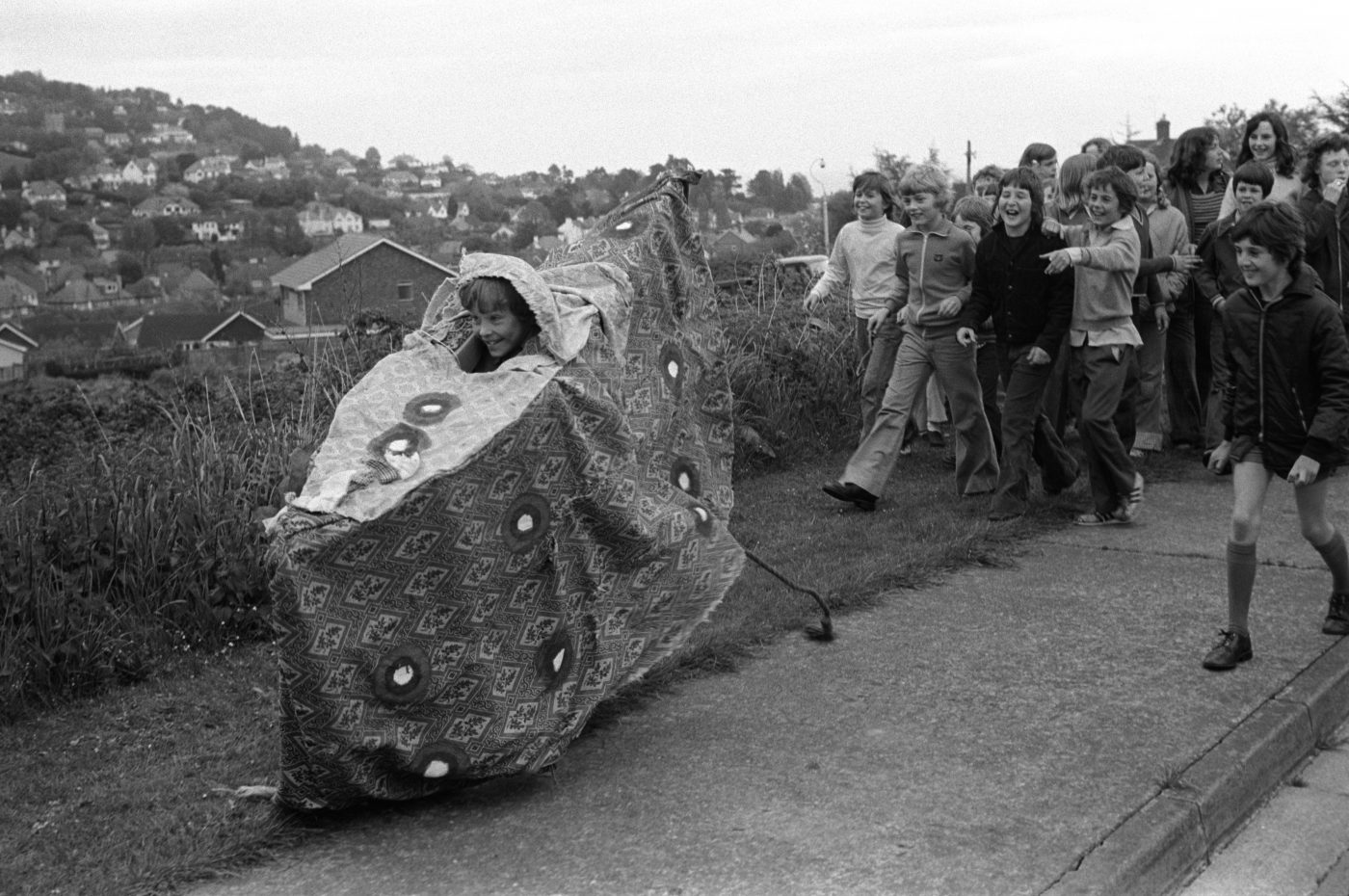
Minehead Hobby Horse, Somerset 1975.
A young boy with his home made hobby horse
joins in the annual May Day celebrations.
© Homer Sykes
You also photographed the rock, punk, new wave, and other music/fashion scenes of Britain. Here you seem to be in a completely different world, what attracted you here? Did it matter that you photographed for news stories for the Weekend Telegraph, Observer, Sunday Times, Newsweek, Now, Time, and New Society?
I have always been interested in people, what they do, how they live, dress, behave and how they interact with each other. I am foremost an observer with a camera I make pictures with a subjective eye for an objective purpose. I just try and see clearly and understand what’s going on. I make pictures that set the scene and put the participants into a visual context.
Working for these magazines gave me financial support, access, confidence and I developed an ability to move about unhindered in different social groups and settings.
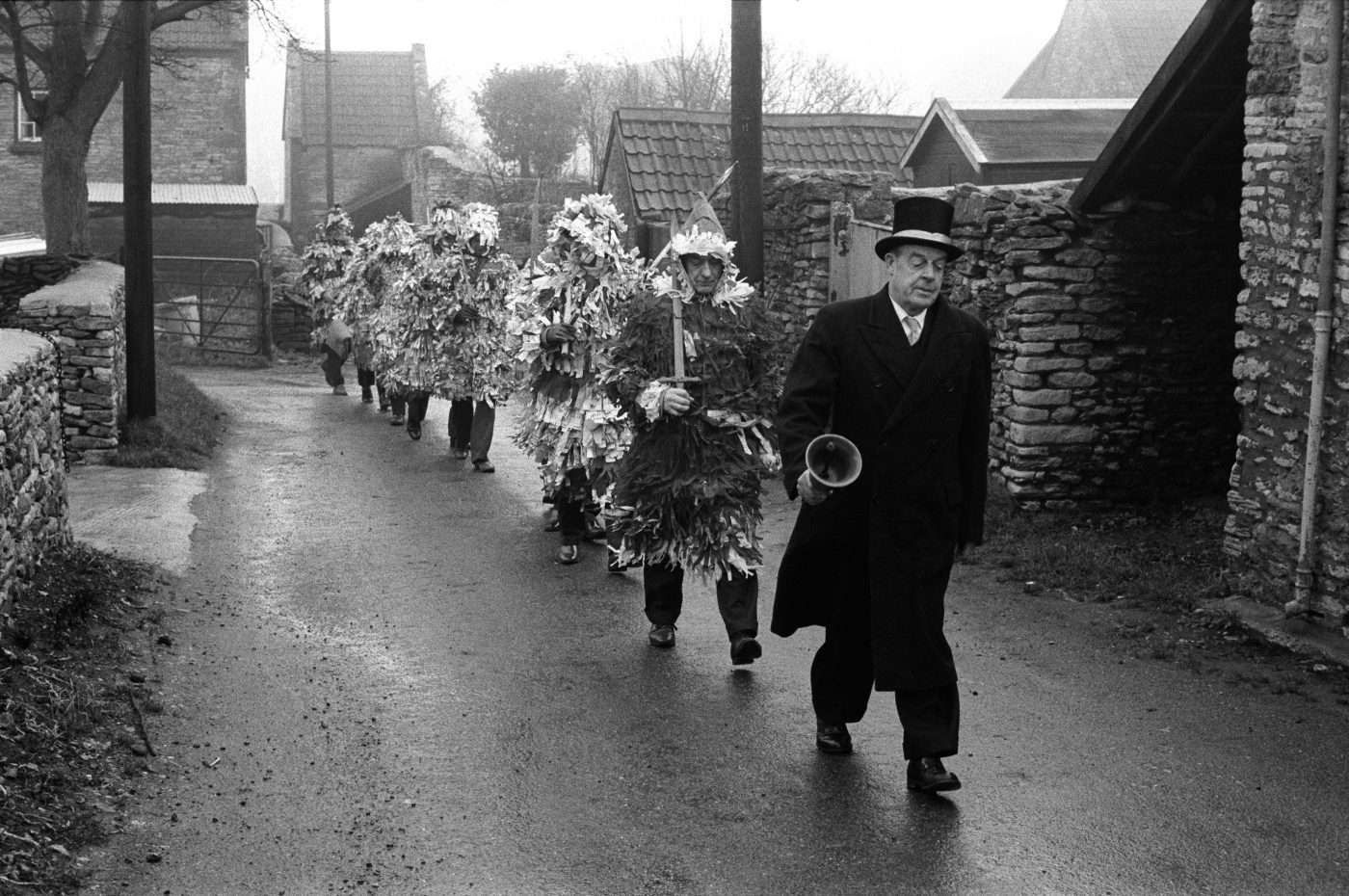
Marshfield Mummers, Gloucestershire 1973.
The town crier leads the ‘Paperboys’ out into the village
for their first Boxing Day performance.
© Homer Sykes
You listen to the stories of the people you are photographing. How do you make your decision to take certain photos?
I like the idea of being an observer, I wait, I watch, I see. A gentle or significant moment attracts me and I always check the background. The background can make or break a photograph.
![Hare Pie Scrambling], Bottle Kicking Easter Monday traditional village sport Hallaton, Leicestershire, England 1970s © Homer Sykes](https://tagree.de/wp-content/uploads/2021/04/Hare-Pie-Scrambling-Bottle-Kicking-Easter-Monday-traditional-village-sport-Hallaton-Leicestershire-England-1970s.-.jpg)
Bottle Kicking and Hare Pie Scrambling, Hallaton, Leicestershire 1973.
Anthony Norman makes a long run down Hare Pie Bank
to score a goal on Easter Monday.
© Homer Sykes
Is there a photographer who has inspired your documentary photography?
Yes, the English photographer Bert Hardy and of course Henri Cartier-Bresson. I was honored to have been invited by both men to lunch with them in their homes.
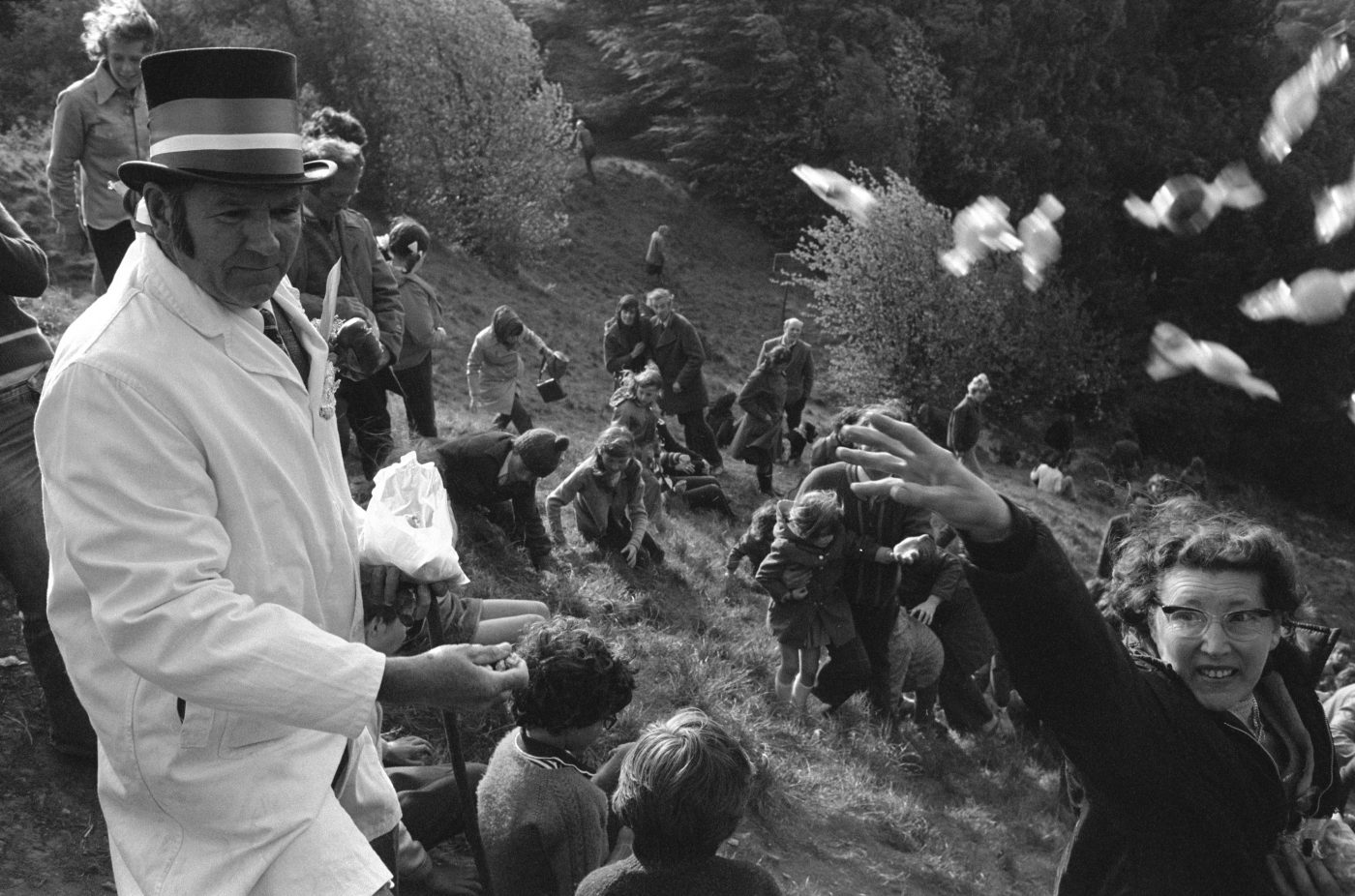
Cheese Rolling, Birdlip, Gloucestershire 1975.
Sweets are thrown up by the Master of Ceremonie
and assistant at the end of the days races on
Spring Bank Holiday Monday.
© Homer Sykes
Your exhibition at Lucy Bell with works from the series we already talked about "Once a Year - British Folklore Customs and Traditions" - The longest-running long-term project of your career. How did you assemble the works?
I have known Lucy Bell and her husband the fine art printer Robin Bell for many years. This is a selling exhibition and Lucy has selected thirty images from my book Once a Year, Some Traditional British Customs. We have created a show, and she will exhibit a few vintage silver gelatin prints made by myself nearly fifty years ago. Some of these have 4 or 5 different address labels on the back as well as designers layout pencil marks. Truly unique objects. There will also be vintage prints of different sizes and some mid career prints made for exhibitions in the 1980s and 90s. Clients will also be able to have Modern Silver Gelatin Fine Art Collectors Prints, these are editioned and will be made to order. So prices vary depending on these factors. We both believe in accessibility and everything is at an affordable price.
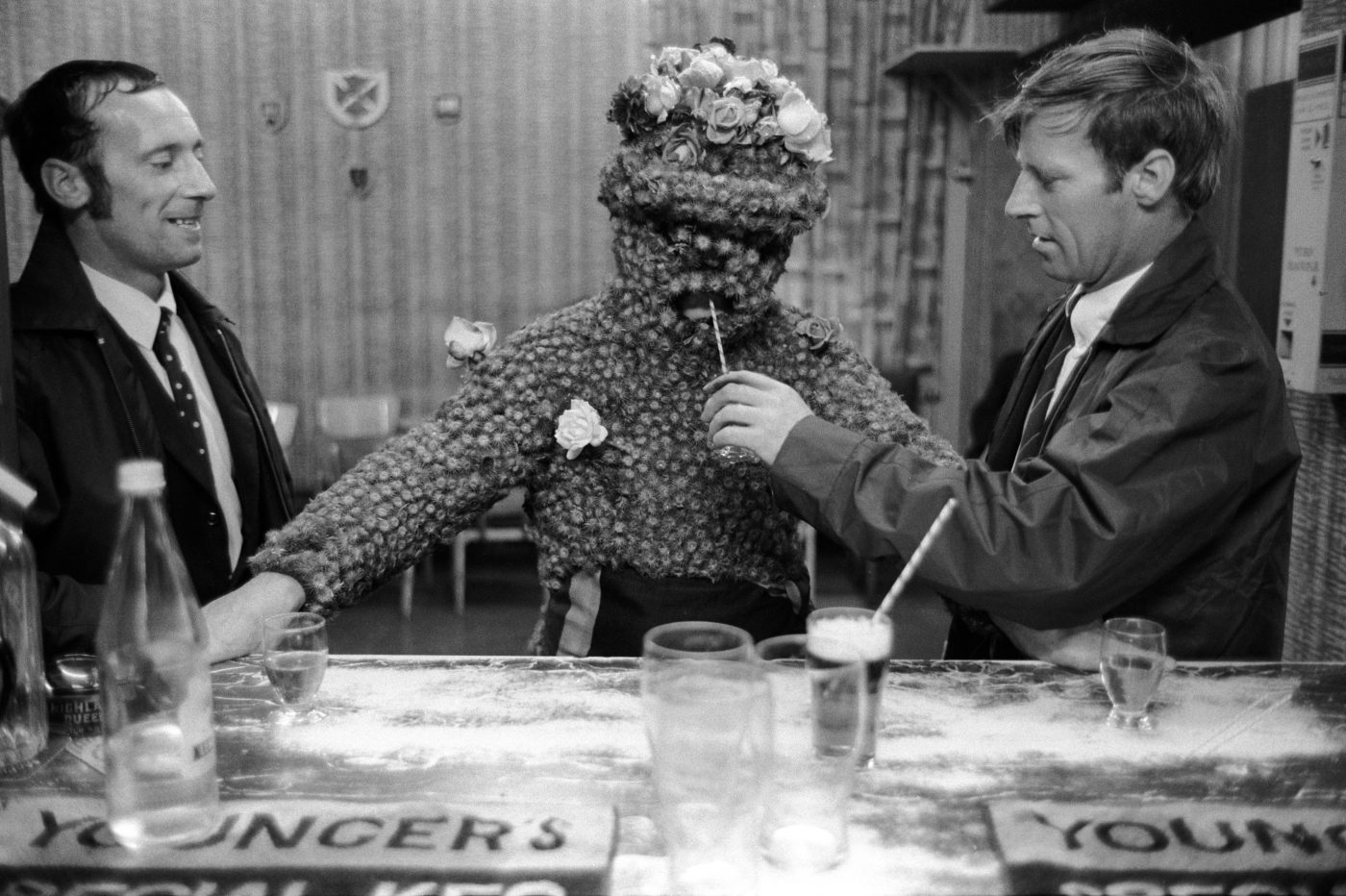
The Burry Man, South Queensferry Lothian, Scotland 1971.
Annually on the second Friday in August,
the Burry Man walks the towns boundaries.
He enjoys a drink in a local pub.
© Homer Sykes
There is also a book publication for the series, where is the title published and where is it available?
Once a Year, Some Traditional British Customs is available at the gallery or from the publisher Dewi Lewis Publishing.
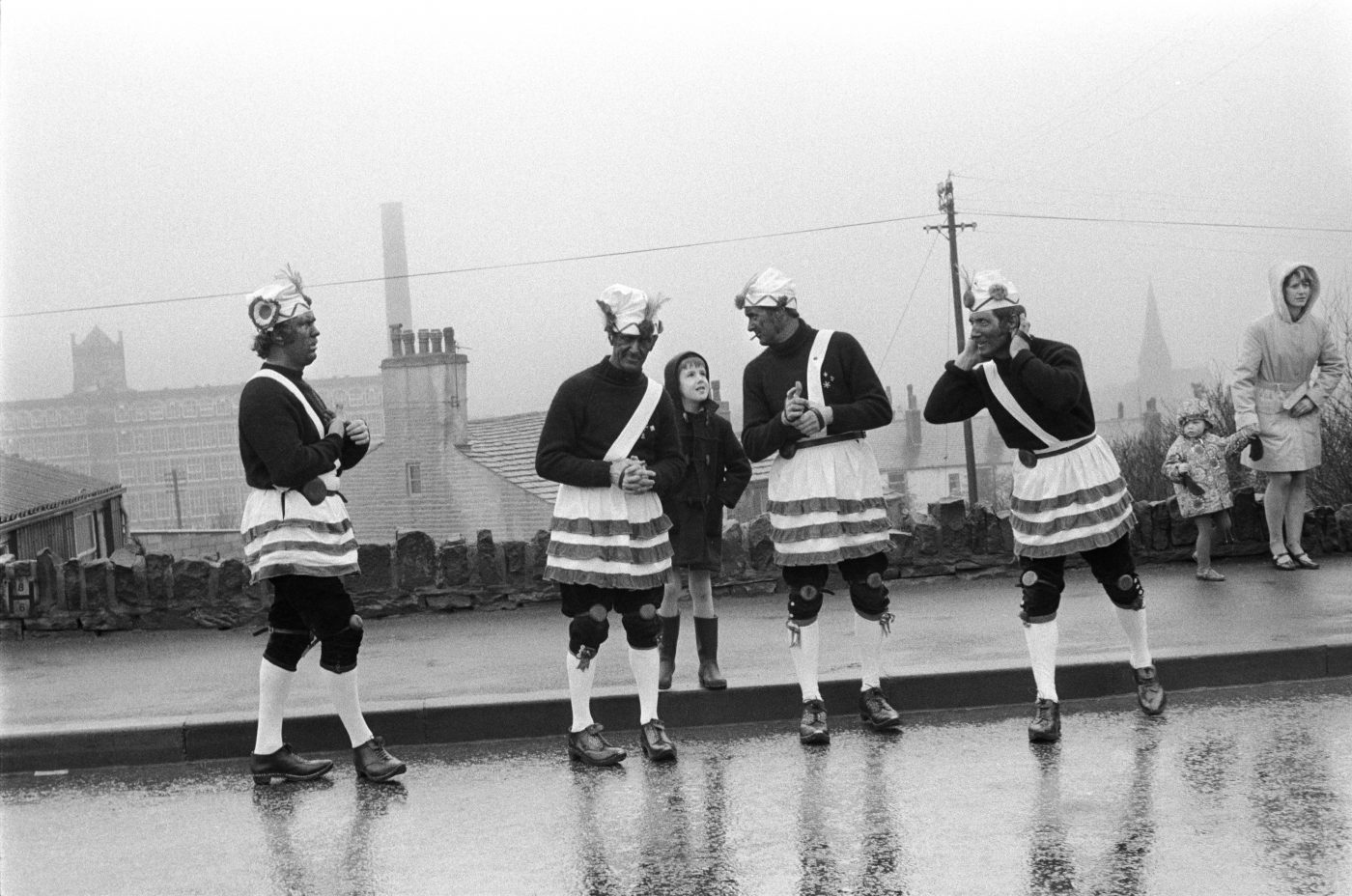
The Britannia Coconut Dancers, Bacup, Lancashire 1972.
Team members chat before a dance on a miserably wet
and cold Easter Saturday.
© Homer Sykes
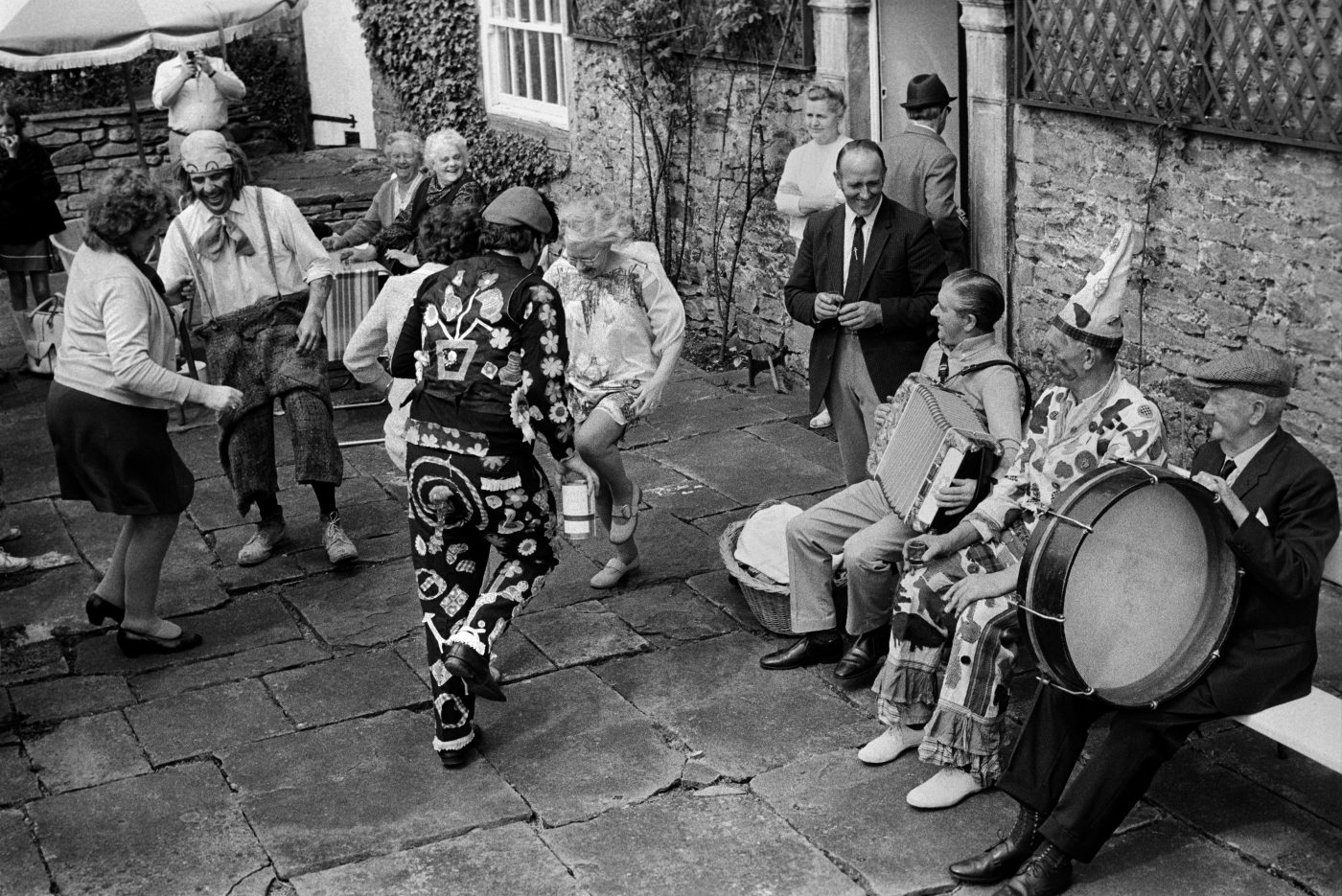
Bellerby Feast, North Yorkshire 1973.
After lunch in the village pub,
performers and friends dance a traditional jig on Spring Bank Holiday Monday.
© Homer Sykes
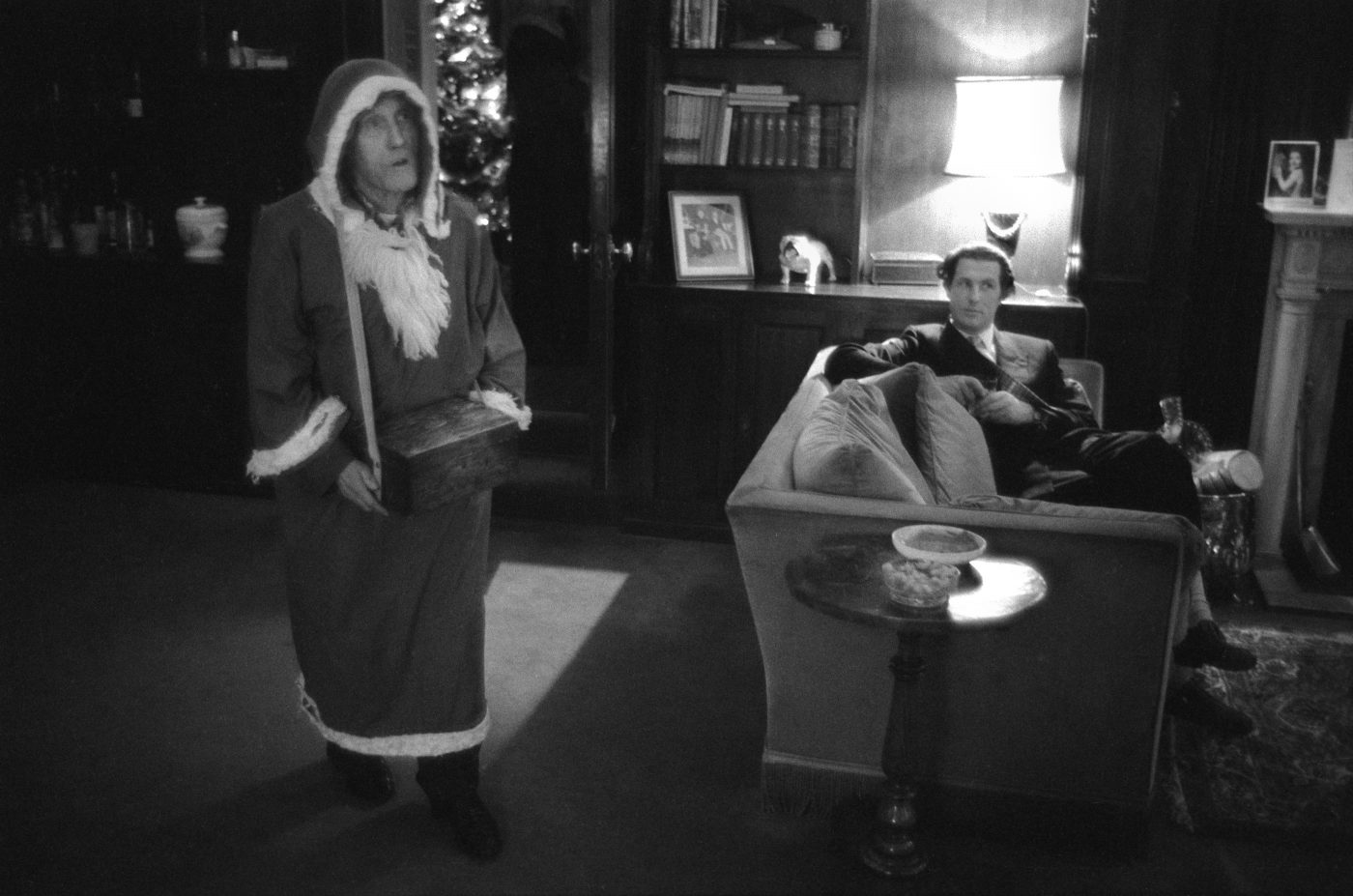
Bampton Mummers, Oxfordshire 1972.
Old Father Christmas introduces
the mumming play to guests at a private house performance
on Christmas Eve.
© Homer Sykes
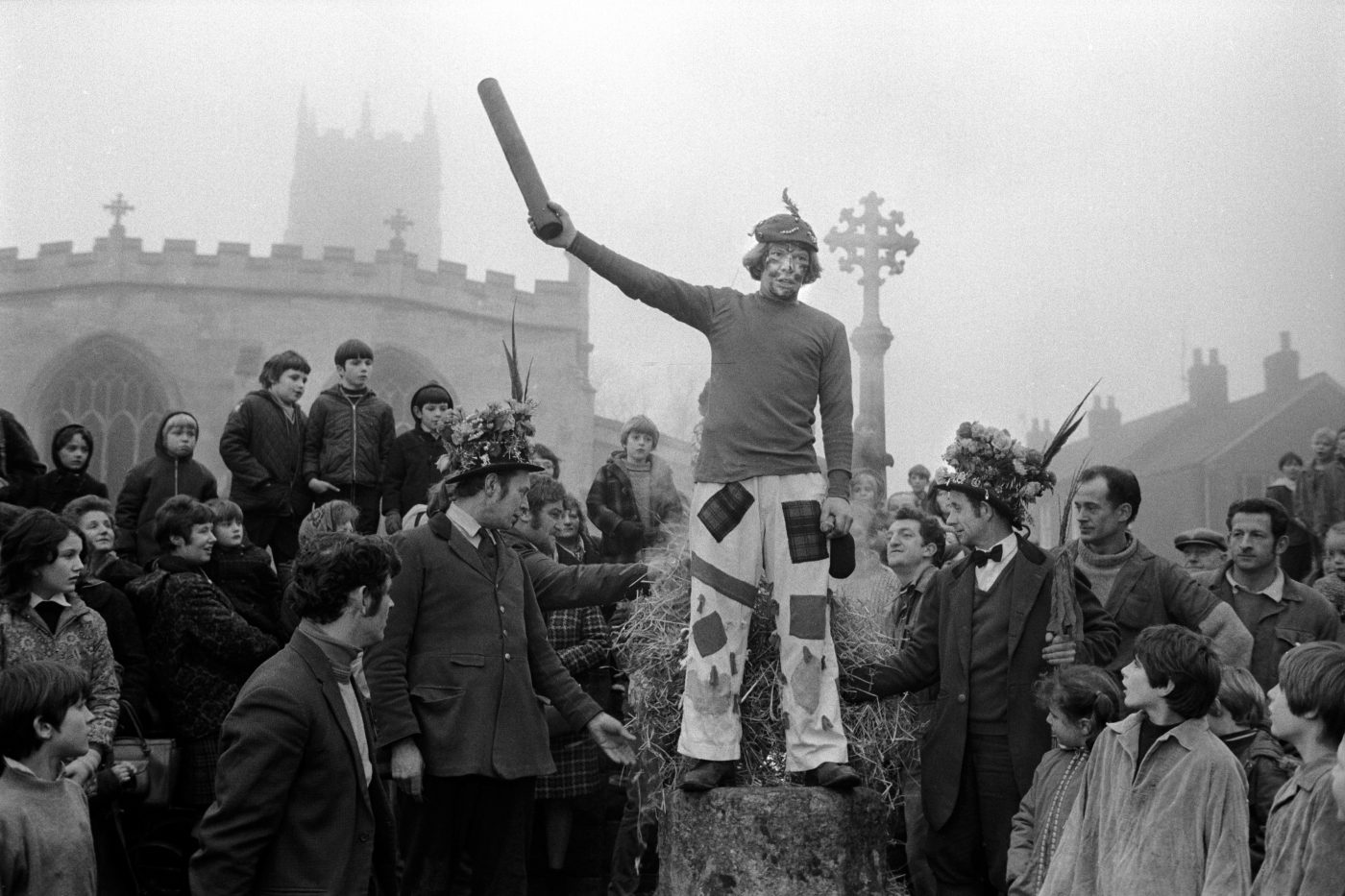
The Haxey Hood Game, Humberside 1972.
Smoking the Fool with Boggans in attendance,
takes place annually on 6 January.
© Homer Sykes
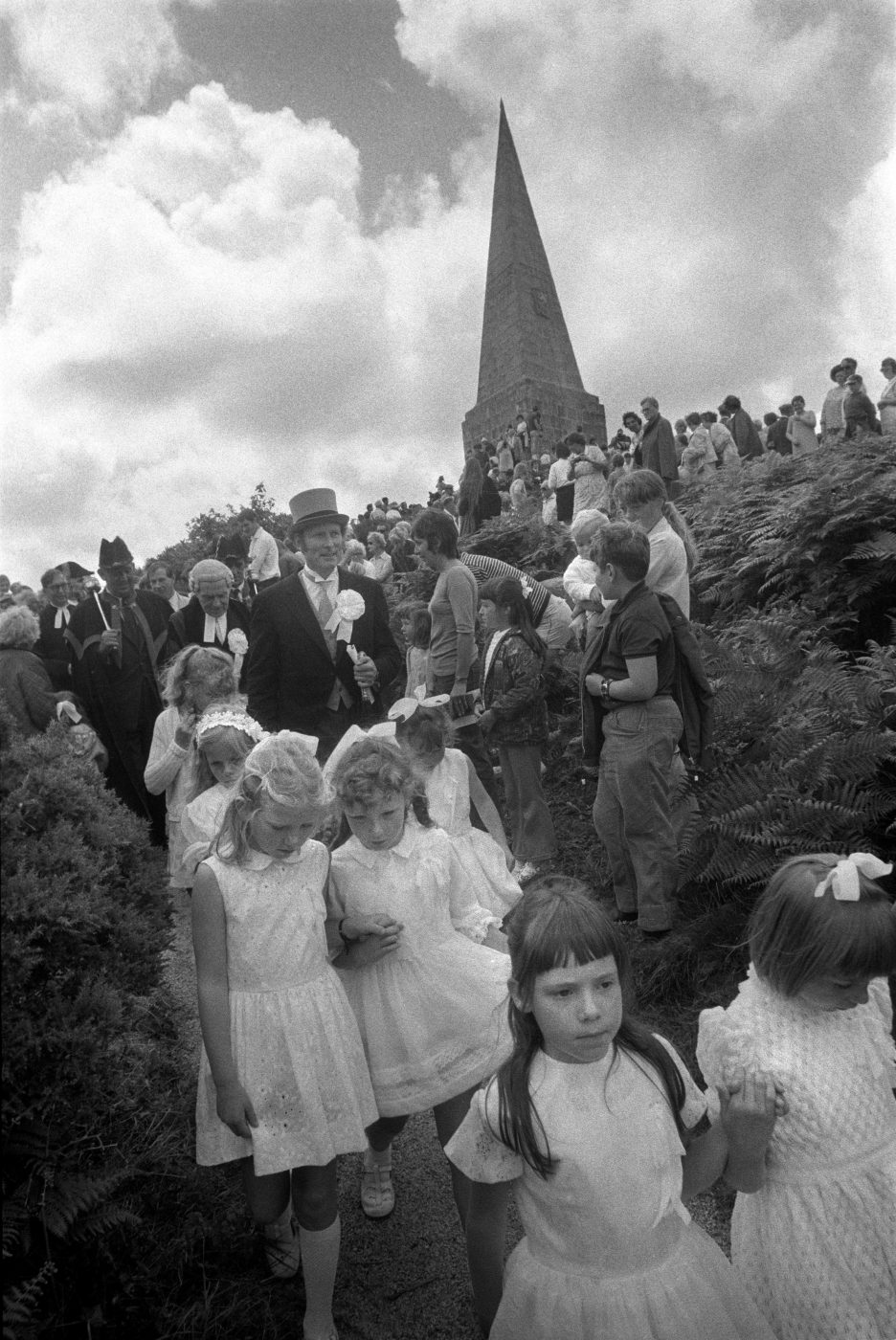
The John Knill Ceremony, St Ives, Cornwall 1971. Once every five years
on St James Day, ten girls dance around the John Knill mausoleum
to the tune of the 'Old Hundredth’.
© Homer Sykes
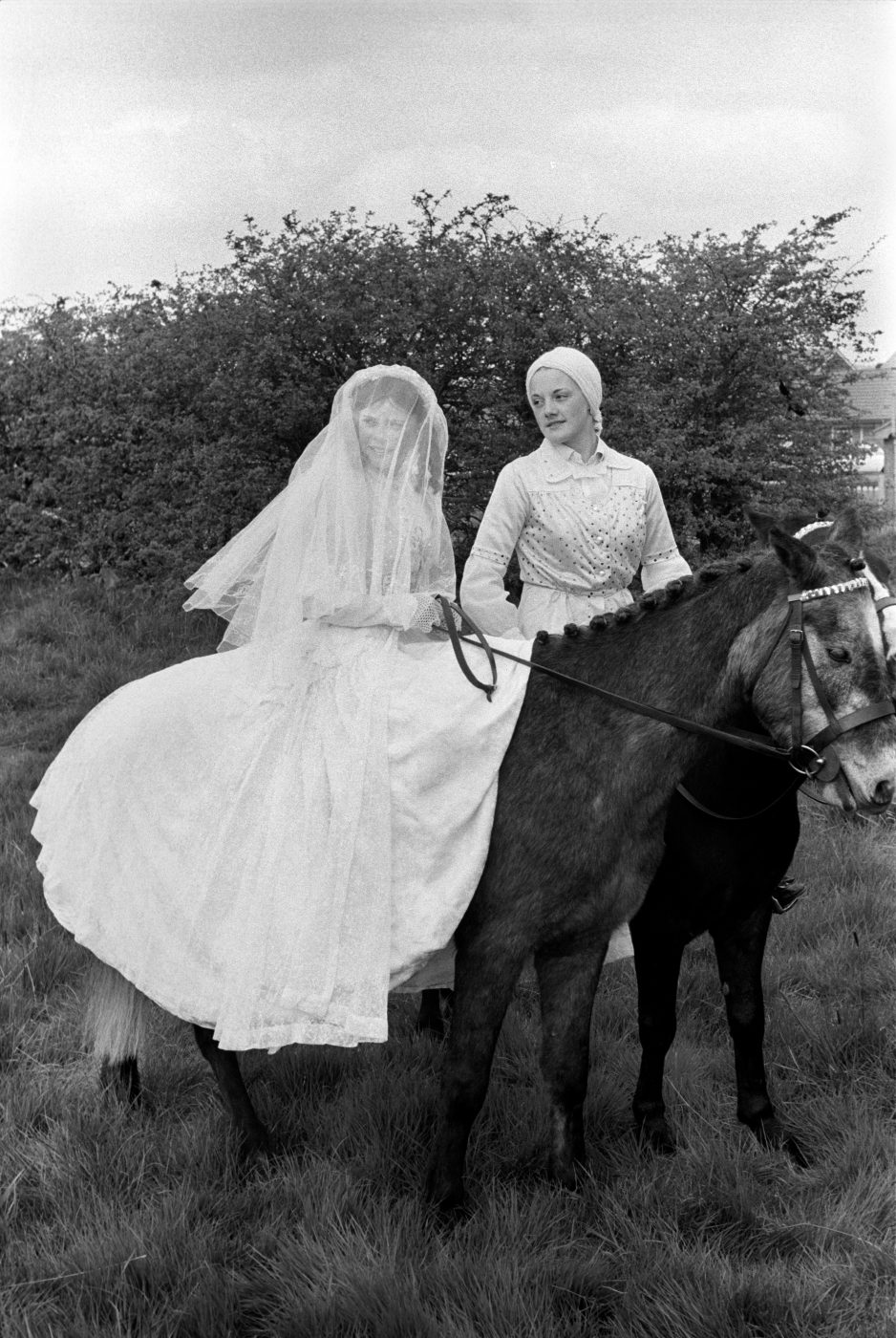
Gawthorpe May Day, Yorkshire 1974. Prince Charming and his bride
lead the annual children’s procession in the village.
© Homer Sykes
The exhibition “Once a Year” by Homer Sykes was shown by the 3rd May - 26th June 2021 at
46 Norman Road
St Leonards on Sea
East Sussex, TN38 0EJ
“Rather than dealing in the perhaps easy absurdity of these events, Sykes’ images work to situate these customs within the everyday - the strange becomes everyday rather than the more travelled inversion of the everyday becoming strange. One striking example of this can be found in his images of The Burry Man. In this custom, carried out in South Queensferry, Lothian, a resident is dressed in a woollen suit which is then entirely covered in burrs, the effect is one of creating a hybrid of man and cactus, The Burry Man then walks the boundaries of the town, calling at all the pubs along the way. Sykes’ photographs serve to situate these events firmly with the register of the ordinary as he shows this creature seated on a bar stool,drinking his whisky through a straw, and walking down a cold, wet tarmac road with a little kid in wellies." Rura lModernity, Everyday Life and Visual Culture, by Dr Rosemary Shirley. Published by Ashgate 2014
Journalism and running an online magazine costs money. Our online magazine is free of advertisements. We do everything out of love and dedication. We are not profit oriented. Support Tagree that the magazine remains ad-free and the monthly costs can be paid. TAGREE, I love your cultural work, I donate to show you my appreciation, voluntary, one-time or regular monthly or per quarter:


